It’s a beautiful evening outside, so you leash up your Dachshund and head out for a leisurely stroll around the neighborhood.
You’re enjoying the fresh air and time with your pup, when all of a sudden your Dachshund spots something – it’s the neighbor dog.
Before you can react, your canine companion is already fiercely barking and lunging toward the dog.
Does this sound familiar?
It can be extremely frustrating when your Dachshund is barking and lunging at other dogs on walks.
Leash reactivity is fairly common for Dachshunds, as they have a strong prey drive and hunting instincts. But that doesn’t mean the behavior can’t be corrected or improved upon.
In this article we offer help and suggestions for easing your frustration, and reducing the frequency of outbursts, if your Dachshund is leash aggressive.
What Causes Leash Aggression?
The Dachshund breed is more prone to aggression than some others so leash aggression is a common problem that Dachshund owners face.
Fear, lack of social skills, and frustration are likely causes of most dog’s aggressive tendencies on the leash.
Some dogs lunge and bark on the leash because they want to form a relationship with another dog, and the tension from the leash causes them to become frustrated. The frustration presents itself in the form of rowdy behavior.
Dachshunds may lunge for various reasons, including wanting to socialize or out of fear.
Other Dachshunds exhibit leash aggression out of fear. If your pup feels threatened, especially on the leash, they may act out of stress.
If a strange dog is walking straight toward your Dachshund, making eye contact, or staring intently with their ears forward, your dog’s defenses may immediately go up, causing them to act out.
The bottom line is that leash aggression is generally rooted from your Dachshund’s fear of a person place, or thing. And for the sake of this article, we’ll say that the “thing” is other dogs.
Physical Signs of Leash Aggression
It’s quite obvious that if your Dachshund is lunging and barking at another dog, they are exhibiting leash aggression.
But it’s important to observe your dog’s body language during the encounter.
Common body language of a leash reactive dog include:
- Tail between the legs, or held rigidly against the body
- Raised hackles (raised hair on the back of your Dachshund)
- Rapid panting
- Body stiff and moves slowly
How Do I Train My Dachshund to Stop Barking and Lunging at Other Dogs?
If your Dachshund had it their way, they’d be able to greet other dogs on their terms, or simply run the other way if they chose.
If your Dachshund is scared of the neighbor dog they’ve spotted, they will bark and either lunge toward the dog to establish hierarchy, or try to create more distance between them (ie. hoping they will be scared and back off).
Walking your dog who is constantly lunges on the leash is not a pleasant experience for anyone involved.
You may have even stopped taking your Dachshund on walks because the thought of dealing with it stresses you out.
And dogs can feel our tension and energy.
You may be tempted to stop walks altogether, but this can make it worse.
However, ceasing daily walks instead of working on the problem will only make it worse.
If your Dachshund is going crazy when they see other dogs on the leash, consider these tips to work on the issue:
Figure out what is causing the barking and lunging
Is your Dachshund lunging toward the other dog or are they trying to get away?
Making this observation will help you determine if your Dachshund is interested in greeting the dog, or getting away from it.
Once you have more information about what might be causing their behavior, you can either teach your dog how to properly greet another dog on leash or help them create some space between themselves and the dog (contrary to popular belief, not all dogs need to say hi to each other).
Teach your Dachshund that lunging won’t solve anything
Do not let your Dachshund greet a fellow dog unless they are calm.
If your dog is fearful and wants to run away, don’t turn the other way or cross the road until your pup has calmed down.
Otherwise your Dachshund may learn that if they are scared, constant lunging and barking will encourage you to lead them away.
Never punish your dog
Give your Dachshund something to do during the moment of reactivity instead of punishing them. Refocus their attention with a game, their favorite toy, or treats.
Punishing your dog will make their behavior worse.
Physically punishing your dog will cause more fear and aggressive behavior.
The last thing you want is for your Dachshund to associate seeing another dog with the pain of punishment.
Turn reactivity into a positive experience
As soon as your reactive Dachshund spots another dog, play with your dog or work on some basic training skills with treats. Doing so will turn a fearful situation into a positive one.
When you do this consistently, your Dachshund will begin associating the sight of another dog with a rewarding experience.
The ultimate goal is to teach your Dachshund to feel a certain way. You want to transform the fearful sight of another dog into a positive experience.
Barking and lunging will turn into focusing on you rather than the other dog, as there is value in the treats or game you’re offering.
Final Thoughts on Managing Leash Reactivity in Your Dachshund
Teaching your Dachshund to stop barking and lunging when they see another dog takes plenty of time and consistency.
It’s important to not get frustrated, as you don’t want to go backwards on your training progress.
As a review, some keys to teaching your Dachshund to ignore other dogs include:
- Use positive reinforcement rather than punishment. Positive reinforcement can include treats, praise or playing your Dachshund’s favorite game. Never physically punish your dog.
- Only allow positive interactions. Don’t allow your Dachshund to greet the other dog, or walk the other way, until they have calmed down. A good way to encourage this is to ask them to sit and focus on you (with a treat).
- Stay calm and relaxed, as your Dachshund can sense your tension and energy.
- Enlist a friend. If you have a friend with a calm, well-trained dog, ask them to help with your training. Just be sure to keep plenty of distance between your dogs while doing so.
- Don’t lose hope! Successfully managing your Dachshund’s crazy leash behavior can take time, but consistency is key.
If you are dedicated to trying the suggestions in the article but you aren’t seeing your Dachshund’s behavior improve, don’t feel like a failure.
It’s totally ok to ask for help from a professional dog trainer. In fact, it’s very important to do so.
In the
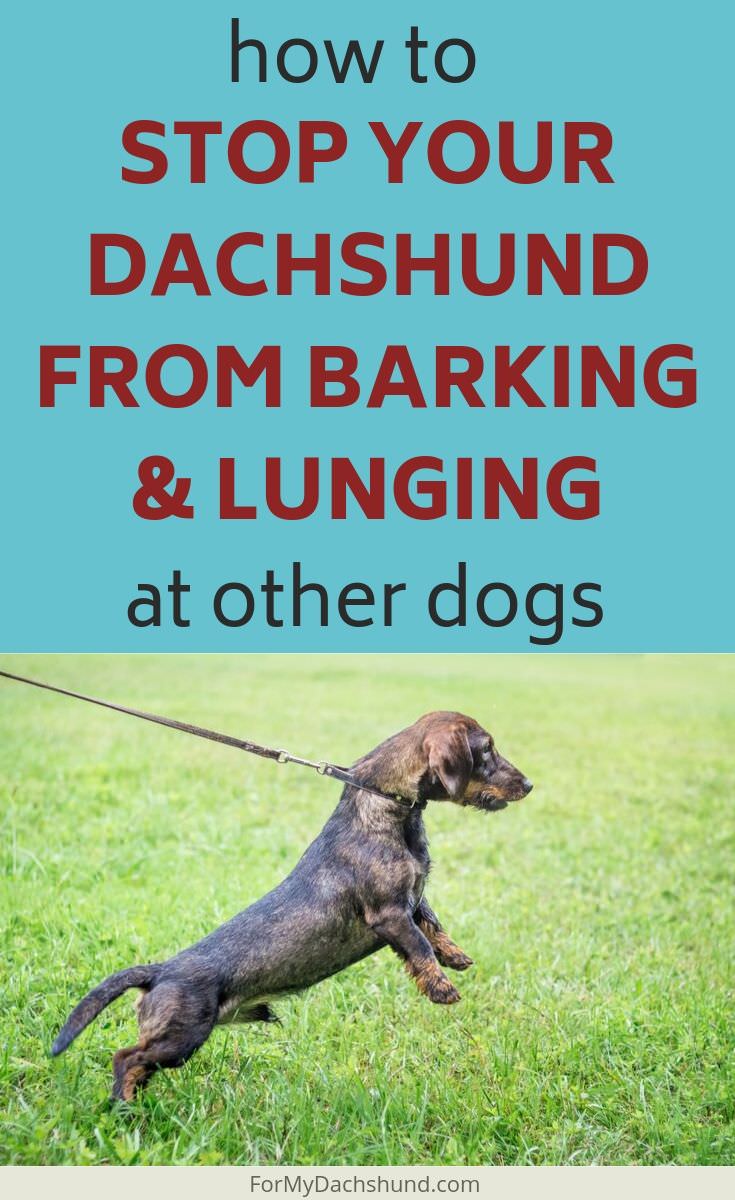
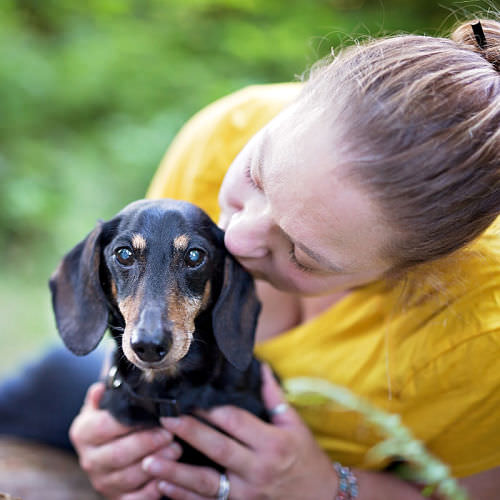
About the Author: Through her 17 years of owning and caring for Dachshunds, and almost 10 years researching and writing about them, JW has become a respected expert in the Dachshund community. Read more about her here.

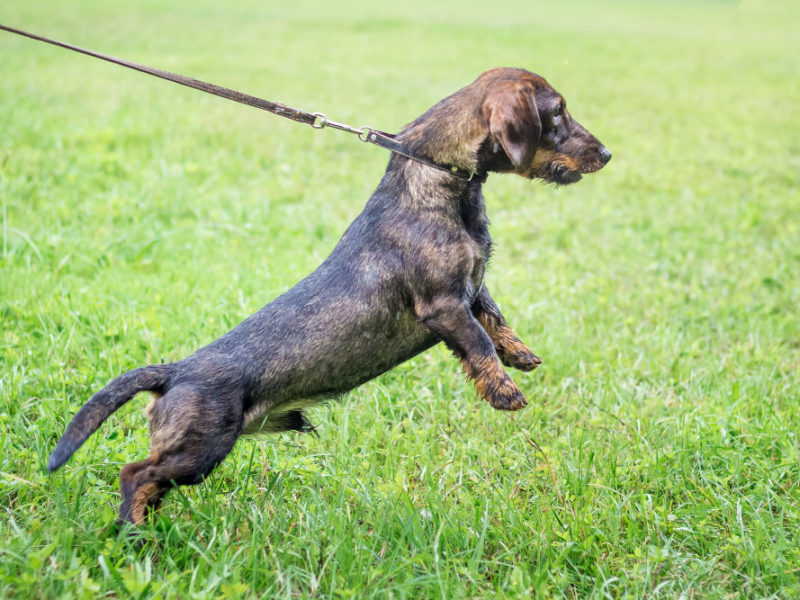
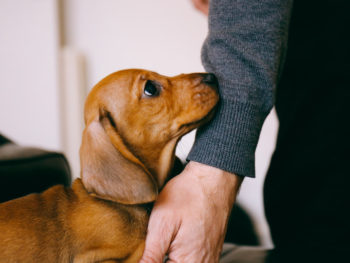
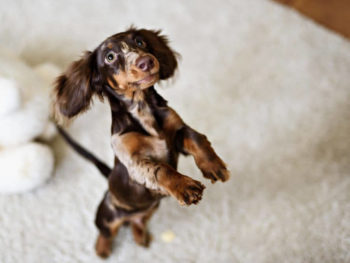




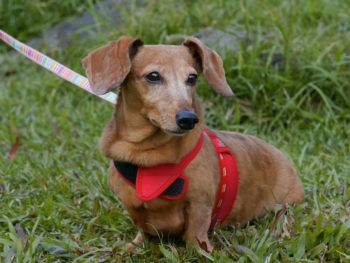

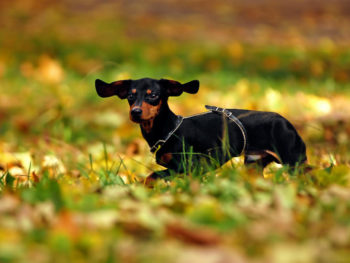



 5 Tips to Stop Your Dachshund from Begging
5 Tips to Stop Your Dachshund from Begging


